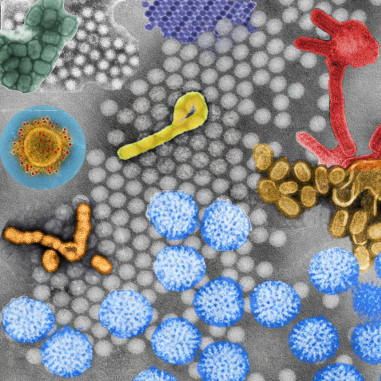
- Tagged as
- - Virus
- - Cultivable virus
Originator
: https://www.izsler.it/
Produced by
: IZSLER Shipping From
: Brescia - IT
Product Description
Ref-SKU:
026V-04380 The virus has been isolated from swine and propagated on Caco2 and MDCK cell line
Product Risk Group:
ICTV Taxonomy:
Virus name:
Isolate:
Genotype:
Serotype:
Storage conditions:
Freeze Dried
Sequencing:
Complete genome
Infectivity:
Infectivity tested and quantified
Mycoplasmic content:
Not tested
GMO:
No
Biosafety restrictions:
Human Risk Group 1, Animal Risk Group 2
Virus host type:
Infectivity Test:
HA test
Genbank reference:
Virus Cultivability:
Passage:
1 x Caco2, 1 x MDCK
Identification technique:
PCR, sequencing
Technical recommendation:
PCR, sequencing
Shipping conditions:
IATA Classification:
Information about the collection of the virus
Recombinant product:
No
Biological material origin:
Natural origin
Collection date:
Wednesday, 11 June, 2014
Country of collection:
Isolation host:
Isolation technique:
Propagation on Caco2 , propagation on MDCK cell line
Isolation conditions:
CACO-2 cells were cultured in 25 cm2 tissue culture flask in MEM with 1 mM of sodium pyruvate and 15% foetal calf serum. When the cells formed a monolayer, usually after 48 h, the medium was removed and cells were washed three times with saline solution. Each sample was inoculated onto CACO-2 cells (1ml) followed by 1ml of MEM with 1 mM of sodium pyruvate. The inoculum was allowed to adsorb at 37 °C for 45 min in presence of 5% CO2 and then 8 ml of MEM with 1 mM of sodium pyruvate was added to all wells. MDCK cells were cultured in 25 cm2 tissue culture flask in Eagle's minimum essential medium in Earle's balanced salt solution (MEM) with 10% foetal calf serum . When the cells formed a monolayer, usually after 48 h, the medium was removed and the cells were washed three times with saline solution. Each sample was inoculated onto MDCK cells (1 ml) followed by 1 ml of MEM containing 10 μg/ml of trypsin. The inoculum was allowed to adsorb at 37 °C for 45 min in presence of 5% CO2 and then 8 ml of MEM with 1 μg/ml of trypsin was added